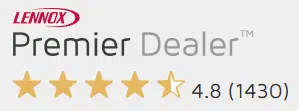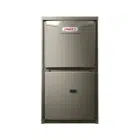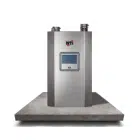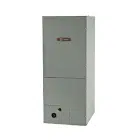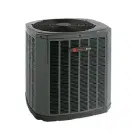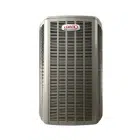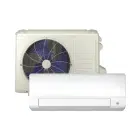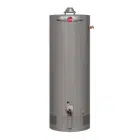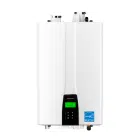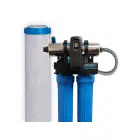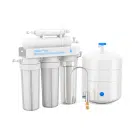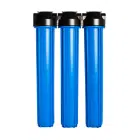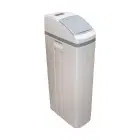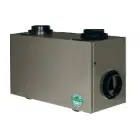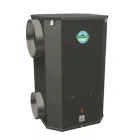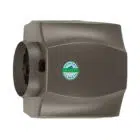
Table of Contents
Air conditioners are essential, especially during the hot months, but not everyone realizes that the real magic behind your cool home is the home AC refrigerant working inside the system. Without the right AC refrigerant, your AC wouldn’t be able to pull heat from the air and keep your space comfortable. But here’s what most people don’t know — not all types of AC refrigerant are the same. As technology evolves, environmental concerns grow, and regulations tighten, choosing the right home AC refrigerant has become more crucial than ever.
Let’s dive into the basics of AC refrigerants, why they matter, and how to make sure you’re using the best one for your air conditioning system.
Why Refrigerants Matter More Than You Think
Refrigerants are chemicals that flow through the coils of your air conditioner in Canada, absorbing heat from inside your home and releasing it outside. It’s a simple process that keeps you cool when it matters most. However, not every AC refrigerant does this job equally.
Some, like the once-popular R-22, are being phased out due to their environmental impact, while newer, more efficient types of AC refrigerant are designed to minimize energy use and lower emissions. So, choosing the right home AC refrigerant can affect everything from how cool your home stays to how much you pay in energy bills and how environmentally friendly your system is.
The Different Types of AC Refrigerants You Should Know About
When choosing a gas furnace for your garage, it’s easy to get overwhelmed by all the specs and features. But here are the ones that really matter:
R-22 (Freon)
You’ve probably heard of Freon. It used to be the go-to refrigerant in pretty much every AC system. But here’s the thing: Freon, or R-22, is no longer manufactured or imported in Canada or the U.S. because of its harmful impact on the ozone layer. If your AC system still uses R-22, you’re running on borrowed time. Once your system needs a recharge or repair, it’s going to cost you more because the supply is limited and prices have shot up.
Even though you can still service older units that use R-22, it’s only a matter of time before the high costs of keeping it running outweigh the benefits. Most people are now switching to more eco-friendly and efficient options.
R-410A (Puron)
R-410A, often branded as Puron, is the most common refrigerant in newer AC systems. It’s a much greener option than R-22, both in terms of environmental impact and efficiency. R-410A doesn’t harm the ozone layer like R-22 does, which is why it’s become the standard for residential AC systems installed after 2010.
But here’s what really makes R-410A stand out — it operates at a higher pressure, which helps your air conditioner cool more effectively while using less energy. This means lower utility bills, and who doesn’t want that? Plus, systems that use R-410A tend to last longer because the refrigerant itself is more stable.
If you’re thinking about upgrading your AC system, this is likely the refrigerant you’ll be using. However, as good as it is, there are newer, even more efficient refrigerants coming into the market.
Is your Puron refrigerant phasing out? Find out how to solve the problem in ou previous article via the link below.
https://thehvacservice.ca/puron-r410a-refrigerant-is-phasing-out-r410a-refrigerant-updates/
R-32
R-32 is one of the newer players in the game and is becoming increasingly popular, especially in energy-conscious countries like Canada. Why? It has a lower global warming potential (GWP) than R-410A, which means it’s an even more environmentally friendly choice. In fact, it’s about one-third more efficient than R-410A when it comes to cooling, making it ideal for people looking to lower their carbon footprint without sacrificing comfort.
Another great thing about R-32 is that it uses less refrigerant to achieve the same cooling power, which translates to even lower energy costs. The only downside? It’s not as widespread in North America yet, but that’s changing fast. More HVAC manufacturers are shifting to R-32 due to its environmental benefits and efficiency.
R-134a
While R-134a isn’t as common in residential AC systems, you might still find it in smaller units, such as portable air conditioners or dehumidifiers. It’s worth mentioning because, while efficient, it doesn’t offer the same energy-saving benefits as R-32 or R-410A. Its global warming potential is also higher than R-32, so it’s slowly being phased out in favor of better alternatives.
If your system uses R-134a, it’s not necessarily bad, but it might be worth considering a change if you’re looking to upgrade for efficiency or environmental reasons.
Refrigerant | Ozone Impact | Global Warming Potential (GWP) | Efficiency | Availability | Cost of Maintenance | Best For |
|---|---|---|---|---|---|---|
R-22 (Freon)
| Harmful to the ozone layer, phased out in Canada & U.S. | High | Low efficiency | Limited (discontinued) | High due to limited supply | Older AC units, but phasing out |
R-410A (Puron)
| No ozone depletion | Moderate | High efficiency, operates at higher pressure | Widely available | Lower maintenance costs than R-22 | Newer AC systems installed after 2010 |
R-32
| No ozone depletion | Low (one-third of R-410A) | Highest efficiency, requires less refrigerant for cooling | Not yet as widespread in North America, growing fast | Lower due to higher efficiency | Energy-conscious homeowners, newer systems |
R-134a | No ozone depletion | Higher than R-32 | Moderate efficiency | Available in smaller systems (portable AC, dehumidifiers) | Moderate costs, being phased out | Small units, but not ideal for future systems
|
What About New Refrigerants?
As technology advances, newer refrigerants are constantly being developed to meet stricter environmental standards and improve efficiency. While the ones mentioned above are the most common today, there are always new developments on the horizon. If you’re planning to invest in a new AC system, it’s worth asking your HVAC technician about future-proof refrigerants to ensure your system will last for years to come.
Efficiency and Environmental Impact: What’s the Best Choice?
So, how do you choose the best home AC refrigerant for your system? It comes down to balancing efficiency with environmental impact.
For many years, R-22 was standard, but its damaging effect on the ozone layer led to its phaseout. Now, R-410A has taken over due to its lack of ozone depletion, but it still has a relatively high global warming potential. This is why newer options, like R-32, are catching on. They offer better cooling performance while being gentler on the planet.
If you’re serious about lowering your carbon footprint, R-32 is the top choice among current types of AC refrigerant. Its efficiency means your AC works harder without using as much energy, which not only cuts down on your bills but also reduces greenhouse gas emissions.
R-410A is still a good option if your system is already using it, as it’s proven to be reliable and efficient. However, for homeowners thinking long-term, upgrading to R-32 when the opportunity arises could be the smarter move.
What’s the Right Refrigerant for Your Home?
Choosing the best AC refrigerant depends on a few key factors: the age of your current system, your efficiency goals, and your commitment to environmental responsibility.
If your system is older and still using R-22, it’s time to seriously consider an upgrade. While there are retrofit options to switch out R-22 for another home AC refrigerant, it’s often more cost-effective to replace the entire unit. Newer systems not only use more efficient refrigerants like R-410A or R-32 but also come with better technology that can save you money in the long run.
For those prioritizing energy efficiency and lower environmental impact, R-32 stands out as the best choice. With its lower global warming potential and higher efficiency, it’s the AC refrigerant for the future. And as more HVAC systems become compatible with R-32, it’s an easy choice for anyone thinking about a new installation.
But here’s the bottom line: consult with a professional HVAC technician in Canada before making any big decisions. They’ll help you evaluate your current system, energy consumption, and potential savings from switching to a more efficient refrigerant.
When using a gas heater, safety is paramount. These heaters are powerful, but they come with risks that you need to manage carefully.
Conclusion
If you’re still using an outdated home AC refrigerant like R-22 or you’re simply curious about the benefits of upgrading to a more efficient system, now is the perfect time to explore your options. Don’t wait for an expensive repair to force your hand. Let us help you find the right refrigerant and system for your home.
By choosing the right AC refrigerant today, you’ll not only keep your home cooler but also save money and reduce your environmental footprint in the process. Give us a call to learn more about upgrading your AC system and making your home more energy-efficient.
Frequent Asked Questions
What is an AC refrigerant, and why is it important?
An AC refrigerant is a chemical compound that absorbs heat from indoor air and releases it outside, effectively cooling your home. The refrigerant cycles through the air conditioner’s coils, where it changes from a gas to a liquid and back, facilitating the heat transfer process. Without the right refrigerant, your air conditioning system wouldn’t be able to cool your home. It plays a crucial role in determining the efficiency, cooling power, and environmental impact of your AC system. Choosing the appropriate refrigerant not only affects cooling performance but also influences energy costs and compliance with environmental regulations. Today, refrigerants are becoming more efficient and eco-friendly, making them even more essential to the overall function of your AC unit.
Why was R-22 (Freon) phased out?
R-22, commonly known as Freon, was widely used in older air conditioners, but it was phased out due to its damaging effects on the ozone layer. The chemical properties of R-22 contribute to ozone depletion when released into the atmosphere, leading to stricter environmental regulations. Since 2020, R-22 has not been produced or imported in Canada and the U.S., making it increasingly expensive and hard to find. If your AC system still uses R-22, maintaining or repairing it can be costly because the refrigerant is now scarce. Many homeowners are upgrading their systems to use more eco-friendly refrigerants like R-410A or R-32, which are more energy-efficient and better for the environment.
What is the difference between R-22 and R-410A?
The primary difference between R-22 and R-410A is their environmental impact and efficiency. R-22 depletes the ozone layer, which led to its phaseout, while R-410A is much more eco-friendly, causing no ozone depletion. R-410A operates at a higher pressure, which makes it more efficient, meaning your air conditioner can cool your home more effectively while using less energy. This can result in lower utility bills. Systems using R-410A also tend to last longer because the refrigerant is more stable under operating conditions. If you have an older unit that still runs on R-22, it’s likely time to consider upgrading to a newer system that uses R-410A or even R-32 for better efficiency and lower environmental impact.
What are the benefits of using R-410A in my air conditioning system?
R-410A is one of the most popular refrigerants in newer air conditioning systems due to its many benefits. First, it doesn’t harm the ozone layer, making it a much greener option than R-22. Second, R-410A operates at higher pressures, allowing your system to cool your home more efficiently, leading to reduced energy consumption and lower utility bills. It’s also more stable, which means less wear and tear on your system, potentially increasing its lifespan. Finally, R-410A is widely available and supported by most HVAC manufacturers, making it the standard choice for systems installed after 2010. Overall, R-410A is a reliable and cost-effective option for most homeowners.
What is R-32, and why is it becoming more popular?
R-32 is a newer refrigerant that is gaining popularity because of its lower global warming potential (GWP) and higher efficiency compared to older refrigerants like R-410A. It is about one-third more efficient at cooling than R-410A, meaning it uses less refrigerant to achieve the same cooling power. This not only reduces energy costs but also makes it a more environmentally responsible option. R-32 also has a lower GWP, which reduces its contribution to global warming. While it’s not yet as widespread in North America, it’s quickly becoming the refrigerant of choice in energy-conscious markets, especially as HVAC manufacturers shift to more eco-friendly options.
s it possible to retrofit my old AC system to use a newer refrigerant?
In some cases, it’s possible to retrofit an older AC system that uses R-22 to work with a newer refrigerant, but it’s not always recommended. Retrofitting involves modifying the existing system, which can be costly and might not provide the same efficiency as a new system built for modern refrigerants like R-410A or R-32. Additionally, not all systems are compatible with retrofitting, and the performance may be compromised if the new refrigerant doesn’t match the system’s pressure and design specifications. In most cases, upgrading to a new, energy-efficient AC system is a better long-term investment, especially when considering the rising costs of R-22 and the improved performance of newer refrigerants.
What is the global warming potential (GWP), and why is it important when choosing a refrigerant?
Global Warming Potential (GWP) is a measure of how much heat a greenhouse gas traps in the atmosphere compared to carbon dioxide over a specific period, usually 100 years. The higher the GWP, the more the substance contributes to global warming. When choosing a refrigerant, it’s important to consider GWP because refrigerants with a lower GWP, like R-32, have less impact on climate change. Older refrigerants like R-22 and R-134a have higher GWPs, meaning they contribute more to global warming when leaked into the atmosphere. As environmental regulations tighten, choosing a refrigerant with a low GWP helps reduce your carbon footprint and keeps your AC system compliant with future standards.
What happens if my AC system leaks refrigerant?
If your AC system leaks refrigerant, it can significantly impact its cooling performance. The system won’t be able to effectively absorb and release heat, making it harder to cool your home, and you may notice higher energy bills. Leaking refrigerant also poses environmental risks, especially if your system uses older, ozone-depleting refrigerants like R-22. If you suspect a refrigerant leak, it’s essential to contact an HVAC technician as soon as possible. Depending on the type of refrigerant, recharging or repairing the system could be costly, especially for systems using phased-out refrigerants. In some cases, it may be more cost-effective to replace the system with one that uses a more efficient and environmentally friendly refrigerant like R-410A or R-32.
Can using the wrong refrigerant damage my AC system?
Yes, using the wrong refrigerant in your AC system can cause significant damage. Air conditioners are designed to operate with a specific refrigerant, and using a different one can affect the system’s pressure levels, cooling capacity, and overall performance. For instance, switching from R-22 to R-410A without proper modifications can lead to mechanical failure because the two refrigerants operate at different pressures. Even worse, it could void your warranty or lead to costly repairs. Always consult a professional HVAC technician before attempting to switch or recharge refrigerants to ensure your system remains in good working order and operates efficiently.
How can I tell which refrigerant my AC system uses?
To determine which refrigerant your AC system uses, check the label on the outdoor unit of your air conditioner. This label should include details about the refrigerant type, such as R-22, R-410A, or R-32. If you can’t find the label or if it has worn off, you can also refer to the user manual or contact the manufacturer with your model number. If your system is older and installed before 2010, it’s more likely to use R-22, while newer systems typically use R-410A. If you’re unsure, a professional HVAC technician can also inspect the unit and confirm the refrigerant type for you. Knowing which refrigerant your system uses is crucial for maintenance, repairs, and potential upgrades.
Share
